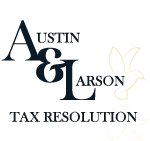Starting your own business or working as an independent contractor in Michigan comes with exciting opportunities, but it also introduces unique responsibilities, like managing self-employment tax. Unlike traditional employees, who split Social Security and Medicare taxes with their employers, you are responsible for covering the full amount yourself. Officially referred to as the Self-Employment Contributions Act (SECA) tax, this levy applies to your net earnings, ensuring your contributions to Social Security and Medicare remain intact.
In Michigan, self-employment tax is calculated based on federal rates, with 15.3% covering Social Security (12.4%) and Medicare (2.9%). You’ll need to account for this tax on income exceeding $400 annually, making accurate record-keeping essential. Stay on top of quarterly estimated payments to both the IRS and Michigan’s state tax authority to avoid penalties and ensure your finances stay on track.

Essential Tax Tips Every Self-Employed Individual Should Follow
Understanding self-employment taxes is crucial for freelancers, contractors, and small business owners. With the right strategies, you can manage your obligations effectively while maximising deductions to save money. By staying informed and proactive, you can ensure your financial health and focus more on growing your business.
What Is the Self-Employment Tax?
Self-employment tax is a reality for freelancers, small business owners, and contractors, and it’s essential to understand how it impacts your income. Unlike when you’re employed and share Social Security and Medicare taxes with an employer, you carry the entire responsibility yourself. This tax is officially referred to as the Self-Employment Contributions Act (SECA) tax, and it applies to your net earnings from self-employment.
Here’s a quick breakdown of what this entails:
- 12.4% goes toward Social Security, capped at a specific annual income limit.
- 2.9% is allocated to Medicare, which applies to all earnings without a cap.
- If you earn over $400 in net income from self-employment, you’re obligated to pay this tax.
Knowing this ensures you’re prepared to plan ahead for the financial implications. By proactively tracking your income and expenses, you can stay compliant and avoid surprises during tax season. Budgeting for these taxes throughout the year can save you unnecessary stress when it’s time to file.
Should I File Estimated Taxes?
If you’ve transitioned to self-employment, you’ll need to adjust to paying taxes without the automatic deductions employers usually handle. Unlike a paycheck that deducts taxes for you, self-employed individuals must calculate and remit quarterly estimated taxes directly to the government. This ensures you meet your obligations for Social Security, Medicare, and income taxes throughout the year.
Here’s what you need to know about estimated taxes:
- Payments are made quarterly—April, June, September, and January of the following year.
- Missing deadlines can result in penalties, so timely payments are crucial.
- You’ll use IRS Form 1040-ES to calculate and send your estimated taxes.
Planning your cash flow around these quarterly payments can help you avoid penalties and maintain financial stability. Remember, staying proactive about your tax responsibilities ensures you won’t face a hefty bill come tax time.
Good News
Even though the self-employment tax can feel overwhelming, there’s a silver lining to help lighten the load. When calculating how much tax you owe, you’re allowed to deduct 50% of the self-employment tax as an income tax deduction. This adjustment to your income is available whether or not you itemise deductions on your tax return.
For example:
- If your net self-employment income is $50,000, the taxable amount for SE tax purposes is reduced to $46,175.
- On this adjusted amount, you pay 15.3%, which equates to $7,065 in self-employment tax.
- You can then deduct $3,532.50 (50%) as an adjustment to income.
By leveraging these deductions, you can reduce your taxable income and ultimately save money. Understanding these benefits can make the tax burden of self-employment easier to manage.
Tip
Self-employment doesn’t mean missing out on valuable tax benefits. You can deduct 50% of your self-employment tax on Form 1040, reducing your taxable income. This deduction is particularly advantageous because it applies whether or not you itemise.
Here’s why this deduction matters:
- It effectively lowers the income figure used to calculate your overall taxes.
- For instance, if your self-employment tax is $4,000, you can deduct $2,000, which directly impacts your adjusted gross income.
- This small but significant adjustment can save hundreds in income taxes depending on your tax bracket.
Taking advantage of this deduction is an essential part of managing your self-employment tax liability. It’s a practical way to keep more of what you earn while staying compliant with tax regulations.
The Tax Is Divided Into Two Parts
Understanding the components of the self-employment tax can help you budget more effectively. The tax consists of two distinct portions: one for Social Security and the other for Medicare. Each has its own rules and rate, ensuring that contributions are made proportionally to your earnings.
Here’s a quick summary:
- Social Security tax is 12.4% and only applies to earnings up to a yearly cap.
- Medicare tax is 2.9% and applies to all earnings without limit.
- The cap for Social Security varies annually; for 2024, it’s $168,600.
By breaking down the percentages and limits, you can better understand where your money is going. Planning for these amounts throughout the year can help you avoid underpayment penalties while fulfilling your tax obligations.
Understanding Quarterly Tax Deadlines
Meeting quarterly tax deadlines is a critical part of self-employment. Missing these deadlines can lead to penalties, so understanding the schedule is essential.
Here’s what you need to remember about quarterly tax payments:
- The deadlines are April 15, June 15, September 15, and January 15 of the following year.
- Payments are based on estimated income, so track your earnings throughout the year.
- Use Form 1040-ES to calculate and submit your payments accurately.
By organising your finances and setting reminders for each due date, you can avoid penalties and maintain a steady cash flow. Consistent planning ensures that tax season doesn’t come with surprises or unnecessary stress.
Deductions You Shouldn’t Miss as a Self-Employed Individual
Self-employment comes with the advantage of valuable tax deductions. These deductions can significantly lower your taxable income and make a big difference in your overall tax bill.
Here are some deductions you might qualify for:
- Home office expenses, including a portion of rent or mortgage and utilities.
- Business-related travel, meals, and mileage.
- Health insurance premiums, if you’re not eligible for employer coverage elsewhere.
Maximising these deductions requires keeping detailed records and receipts. With proper documentation, you can confidently claim every deduction you’re entitled to and optimise your tax savings.
Conclusion
Getting your self-employment taxes done right is crucial to keeping your finances on track and avoiding unnecessary stress. With the right tools and strategies, you can uncover deductions tailored to your industry and reduce your tax liability. Partnering with trusted experts like Austin & Larson Tax Resolution can help you feel confident that every detail is accounted for.
If you prefer filing on your own, there are solutions designed to simplify the process and ensure nothing is missed. Utilising advanced tools to search for deductions and credits can save you time and maximise your return. Whether you choose to go solo or rely on expert guidance, taking control of your taxes now sets you up for a worry-free tax season.
Frequently Asked Questions
What records should I keep to prepare for self-employment taxes?
Answer: Maintaining organised records of income, expenses, receipts, and invoices is essential for accurate tax reporting. Use digital tools or apps to track these details, ensuring you have documentation ready for deductions and quarterly payments.
Do I need to pay self-employment tax if I have a full-time job?
Answer: Yes, if you earn $400 or more in net income from self-employment, you are still required to pay self-employment tax, even if you have a full-time job. However, Social Security tax will only apply up to the annual income cap across both sources of income.
Are there specific deductions for first-time freelancers?
Answer: First-time freelancers can take advantage of common deductions such as home office expenses, startup costs, and necessary business supplies. Start keeping detailed records from day one to maximise these tax-saving opportunities.
What happens if I miss a quarterly tax payment?
Answer: Missing a quarterly payment could result in IRS penalties and additional interest on the unpaid amount. To avoid this, set reminders for deadlines and consider using tax software that automates payment calculations.
Can I deduct health insurance premiums as a self-employed individual?
Answer: Yes, self-employed individuals can deduct health insurance premiums paid for themselves, their spouse, and dependents. This deduction applies even if you don’t itemise deductions, helping to reduce your taxable income significantly.


Recent Comments